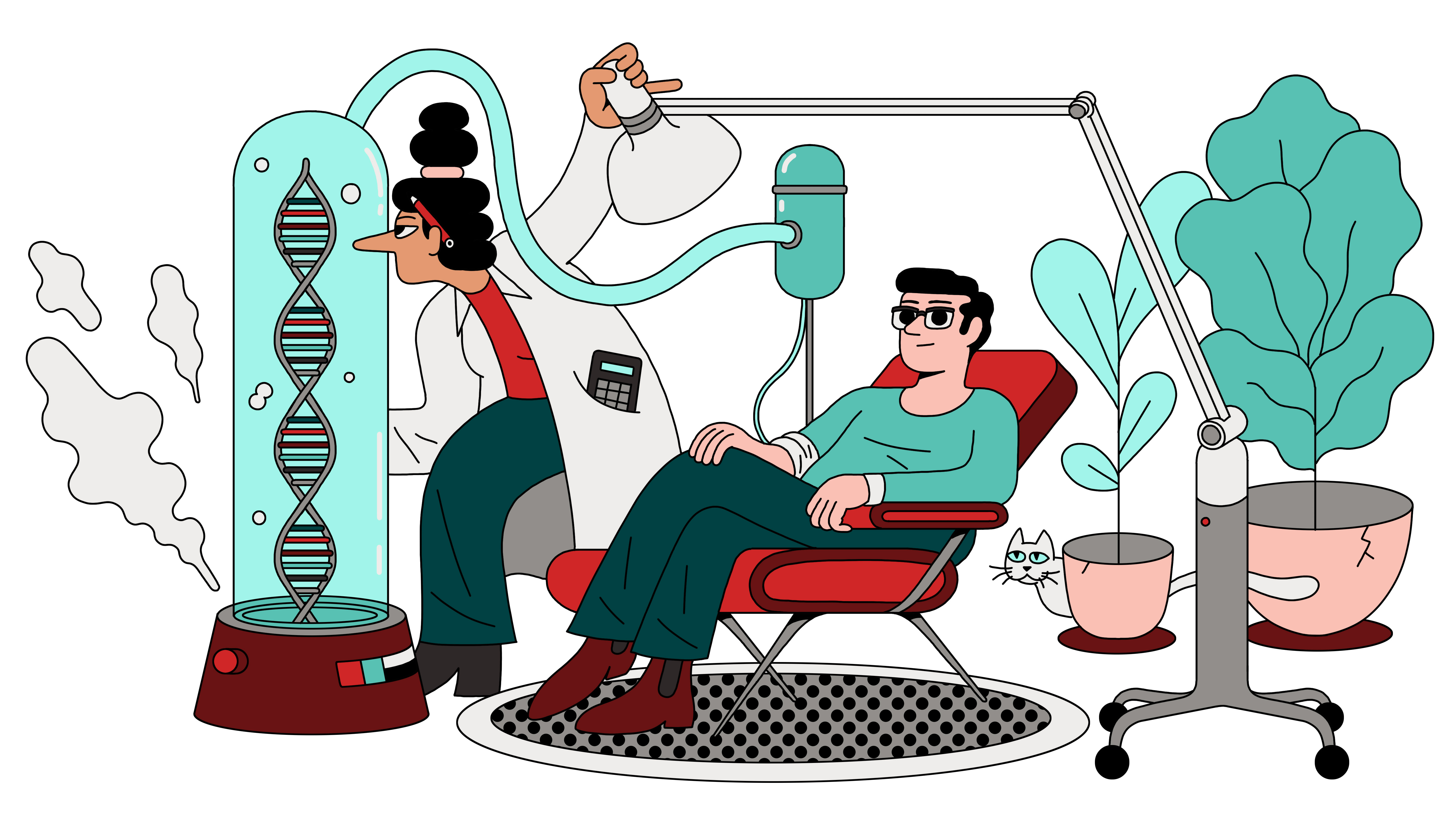Key Takeaways
| ⚡ CRISPR gene editing continues to revolutionize healthcare in 2024, enabling the treatment of genetic disorders like sickle cell disease, muscular dystrophy, and cancer. |
| ⚡ Gene therapies are making strides, with new treatments offering hope for rare diseases by correcting faulty genes at their source. |
| ⚡ Synthetic biology is pushing the boundaries of what's possible, allowing scientists to create synthetic organisms and engineer crops that are more resistant to climate change. |
| ⚡ Ethical concerns and regulatory challenges remain critical issues as genetic engineering technologies advance rapidly, especially in areas like human germline editing. |
Breakthroughs in Genetic Engineering – 2024: Unlocking New Possibilities in Healthcare and Beyond
The field of genetic engineering is undergoing unprecedented advancements in 2024, with cutting-edge technologies like CRISPR, gene therapies, and synthetic biology opening new doors in medicine, agriculture, and biotechnology. What was once considered science fiction is now becoming reality, as scientists develop the tools to rewrite the genetic code and correct mutations that cause disease, create synthetic organisms, and engineer crops that can withstand the harshest environmental conditions.
Genetic engineering offers the potential to cure previously untreatable genetic disorders, revolutionize the way we produce food, and even create life forms from scratch. However, these breakthroughs also raise important ethical questions about the limits of human intervention in nature and the need for robust regulations. In this blog, we’ll explore the most significant genetic engineering breakthroughs of 2024, their potential impact, and the challenges that lie ahead.

"Genetic engineering has reached an inflection point," says Dr. Melissa Ortiz, a leading researcher in gene therapy at the National Institutes of Health (NIH). "We now have the ability to alter the fundamental building blocks of life. The question is, how do we use this power responsibly?"
"The breakthroughs we’re seeing today will have far-reaching implications not only for healthcare but for society as a whole."
CRISPR: A Revolutionary Tool in Gene Editing
CRISPR (Clustered Regularly Interspaced Short Palindromic Repeats) has transformed genetic engineering by providing a precise, efficient, and cost-effective way to edit DNA. In 2024, CRISPR is being used to treat a growing number of genetic disorders, including sickle cell disease, muscular dystrophy, and certain types of cancer. This groundbreaking tool works by using a specially designed enzyme to cut out faulty sections of DNA, allowing scientists to replace or repair them with healthy genes.
The success of CRISPR in clinical trials is showing enormous promise. For example, CRISPR-based therapies for sickle cell disease, which affects millions of people worldwide, have entered advanced clinical stages, offering patients a potential cure by correcting the genetic mutation responsible for the disease. Additionally, CRISPR is being used to develop new cancer immunotherapies by editing immune cells to better recognize and attack cancerous tumors.

Gene Therapy: Curing Diseases at the Source
Gene therapy is another area of genetic engineering that has made remarkable progress in 2024. This technique involves correcting or replacing faulty genes in a patient’s cells to treat genetic disorders at their source. By directly addressing the genetic cause of a disease, gene therapy has the potential to provide long-lasting cures for conditions that were once considered incurable.
One of the most exciting developments in gene therapy is its application to rare diseases. For example, researchers have successfully treated children with *spinal muscular atrophy (SMA)*—a severe genetic disorder that affects motor function—by delivering a functional copy of the defective gene. Similarly, advancements in gene therapy for hemophilia, a disorder that impairs the blood’s ability to clot, have shown promise in reducing or eliminating the need for regular blood transfusions.
These breakthroughs not only improve the quality of life for patients but also reduce the long-term healthcare costs associated with managing chronic genetic conditions. As gene therapies become more widespread, they offer hope for millions of people living with inherited diseases.
Synthetic Biology: Engineering Life from Scratch
Synthetic biology is a rapidly growing field within genetic engineering that focuses on designing and building new biological systems from the ground up. In 2024, scientists are using synthetic biology to create synthetic organisms, develop biofuels, and engineer crops that can thrive in challenging environments.
One of the most exciting applications of synthetic biology is in agriculture. As climate change continues to threaten food security, scientists are developing genetically engineered crops that are more resilient to drought, pests, and extreme weather. These crops not only help ensure a stable food supply but also reduce the need for harmful pesticides and fertilizers, promoting more sustainable farming practices.
In the realm of medicine, synthetic biology is being used to create engineered microbes that can produce valuable compounds, such as pharmaceuticals and biofuels, in a more cost-effective and environmentally friendly manner. This emerging technology holds the potential to revolutionize industries ranging from healthcare to energy production.
Ethical Considerations and Regulatory Challenges
While the breakthroughs in genetic engineering offer tremendous promise, they also raise important ethical and regulatory questions. One of the most contentious issues is human germline editing—modifying the genes in sperm, eggs, or embryos in ways that can be passed on to future generations. While germline editing has the potential to eliminate genetic diseases before birth, it also opens the door to "designer babies" and other ethical concerns about altering human traits.
In 2024, the international community is still debating the appropriate regulatory frameworks for genetic engineering. Many countries have banned or heavily restricted germline editing, while others are pushing for more research into its potential benefits and risks. The rapid pace of advancements has outpaced regulatory development in some regions, leading to calls for greater oversight and international collaboration to ensure that genetic engineering is used responsibly and ethically.
The Future of Genetic Engineering
The breakthroughs in genetic engineering we’re witnessing today are only the beginning. As technologies like CRISPR, gene therapy, and synthetic biology continue to evolve, they will reshape industries ranging from healthcare and agriculture to energy and environmental science. With the power to edit the very code of life, humanity stands on the brink of a new era—one where we can cure diseases, create sustainable solutions for food and energy, and push the boundaries of biological innovation.
However, the future of genetic engineering will depend on how society navigates the ethical and regulatory challenges that accompany these advancements. As we move forward, it will be crucial to balance innovation with caution, ensuring that genetic engineering is used to improve lives while respecting ethical boundaries.
Which Genetic Engineering Breakthrough Excites You the Most?
Vote on the breakthrough in genetic engineering you believe holds the most promise for the future:
Genetic Engineering Breakthroughs Information
Key Focus: CRISPR, Gene Therapy, Synthetic Biology, Germline Editing
Key Players: Research Institutions, Biotech Companies, Governments
Year: 2024
Primary Goals: Cure Genetic Disorders, Develop Sustainable Crops, Address Ethical Concerns


.jpg)





.jpg)
